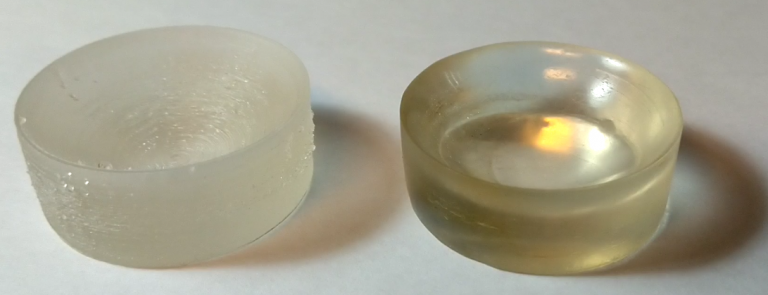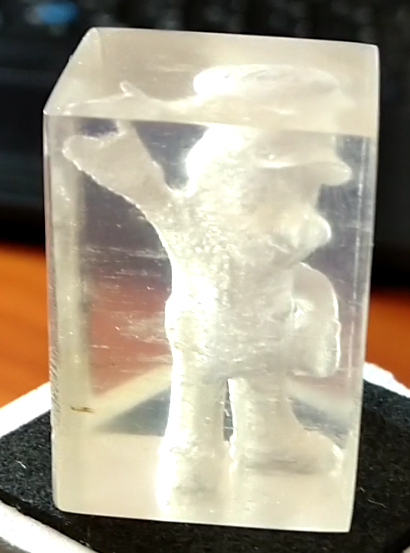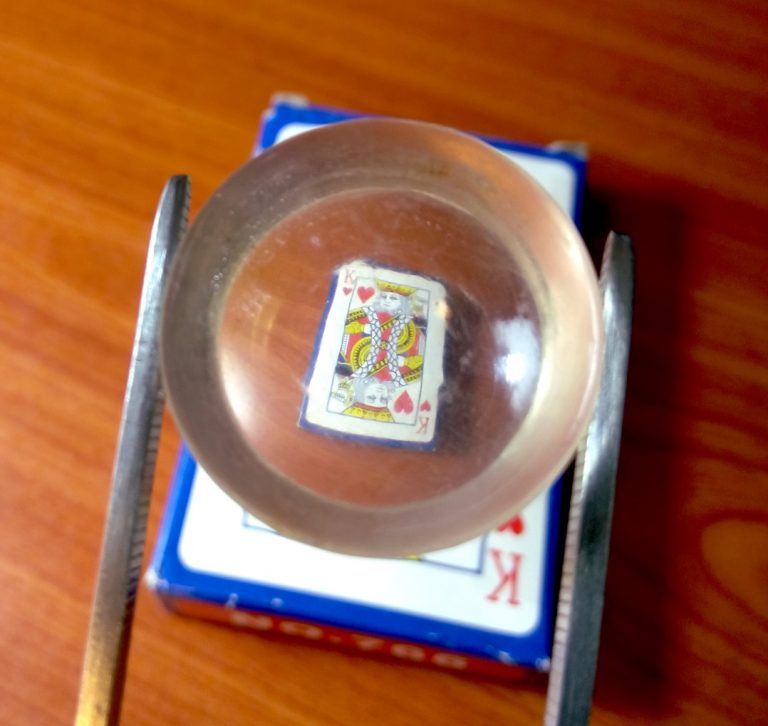In a new project from Fenneclabs, self-professed maker Tomer Glick has demonstrated how to make transparent parts on a desktop FFF 3D printer.
A challenging project, due to the inhomogenity of melted plastic, Glick’s experimentation successfully creates focusing lenses, and clear blocks that replicate the effect of etched glass.
Sanding out the grooves
Glick’s 3D printed lenses are achieved by diminishing the bubbles created when depositing consecutive layers. To achieve this, he developed CURA settings that make each deposited layer as thin as possible, and over extrudes the plastic so it melts into and molds to the shape of the previous layer.
After some tweaks to keep over extrusion in check, the next step is post processing to ride the object of any grooves.
Though effective at smoothing the objects, acetone treatment resulted in cloudy parts. The most successful technique Glick found was sanding the parts with incremental grains of sand paper.
With this he managed he managed to produce a basic lens capable of focusing light.

Replicating laser etching
Through further experimentation, Glick managed to create curved lenses which could focus multiple laser beams into a single spot.
By working out how to add shaped internal cavities in Blender, Glick also created a miniature “frozen” Mario sculpture, and a small cube containing a snowflake-like pendant.

A larger, flat lens produced by Glick in this project is also capable of focusing sunlight across a room.
All prints pictures were made using Clear EasyABS from Prusa Research.
3D printed lenses
While Glick’s lenses aren’t suitable for use in a camera, this has been achieved before by designer Amos Dudley using SLA.
In Germany, researchers have also employed micro SLA technology to 3D print tiny lenses that give drones and robots sharper vision.
On a more industrial scale, Dutch company Luxexcel is leading the way for 3D printed, patient-specific lenses for sight correction.
To try 3D printing your own transparent objects, check out Glick’s full post on Fenneclabs here.

Nominate your Innovation of the Year and more n the 2019 3D Printing Industry Awards now.
Subscribe to the 3D Printing Industry newsletter, follow us on Twitter and like us on Facebook.
Join 3D Printing Jobs to find your next opportunity.
Featured image shows Magnifying lens made on a FFF 3D printer. Clip via Tomer Glick on YouTube



